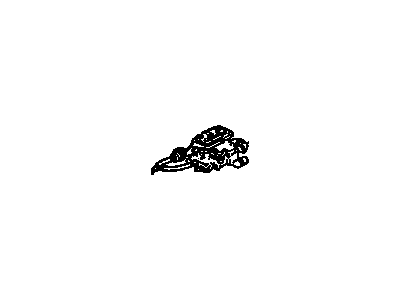
My Garage
My Account
Cart
Genuine Buick Century Carburetor
Engine Carburetor, Carb- Select Vehicle by Model
- Select Vehicle by VIN
Select Vehicle by Model
orMake
Model
Year
Select Vehicle by VIN
For the most accurate results, select vehicle by your VIN (Vehicle Identification Number).
1 Carburetor found
Buick Century Carburetor
This system called carburetor that is fitted in Buick Century is responsible for mixture of air and fuel in the correct ratio to make it respond optimally. This is based on pressure differential of atmospheric pressure and engine vacuum by drawing air into the carburetor and atomizing fuel from float bowl into the airstream. Buick Century carburetors can have one, two, or four barrels, four-barrel system employ the first two barrels for low velocity, the secondaries open at high load. Fixed venturi and variable venturi carburetors have been some of the carburetors used by Buick as part of the parts of some of the past models of Buick Century. These design made them to contain some devices such as accelerator pumps and choke plates to vary the air fuel mixture in these various situations such as cold starting and for instances when the car has to accelerate very quickly. However, even with the move to fuel injection the carburetor is still an important aspect of the Buick Century's induction system.
Each OEM Buick Century Carburetor we offer is competitively priced and comes with the assurance of the manufacturer's warranty for the part. Furthermore, we guarantee the speedy delivery of your orders right to your doorstep. Our hassle-free return policy is also in place for your peace of mind.
Buick Century Carburetor Parts Questions & Experts Answers
- Q: How is carburetor identification indicated and what adjustments are necessary for optimal performance on Buick Century?A:The carburetor identification is stamped at the body side of the carburetor; the carburetor model code of General Motors Rochester carburetors has a meaning; the first digit of the carburetor model number is actually the number of barrels and then there are specific letters for the kinds of choke. Before making any adjustments, one should verify that the engine is warms up, then tighten the carburetor mounting nuts and intake manifold bolts, make sure the manifold heat valve is not stuck and then perform choke, idle speed and mixture adjustments. Curb idle and mixture settings determine the fast idle speed which is set automatically. In choke rod adjustments the stop screw fixed with the idle cam should be tuned so as to touch the fast idle cam, while there should be clearances between the choke valve and the wall of air horn. The intermediate choke rod adjustments can be carried out by placing the coil lever against a drill bit placed in the choke housing. Vacuum brakes adjustment means having to apply vacuum to the diaphragm, and check the choke valve clearance. Adjustments of auxiliary vacuum brakes come close to these and the adjustment of the choke unloader require measurement of clearance when the throttle is wide open. Float level and drop measurements must be correct for proper performance and accelerator pump has adjustments for the rod to ensure correct pump operation. Next, the bowl vent valve must be set sought after to open at the right idle speed. For specific models, configurations, and settings, use may be needed to set adjustments of versions of float level and fast idle, Choke Valve Position. The Rochester Quadrajet carburetor is two-stage with first and second venturi and with fast idle, choke rod, specially vacuum-breaks and the second throttle plates. Operations such as removals and installation include unbolting of different elements and other features concerning right positioning of gasket. Rejuvenation focuses on detailed wash and inspection and change out of parts with kits offered for extensive restoration.


